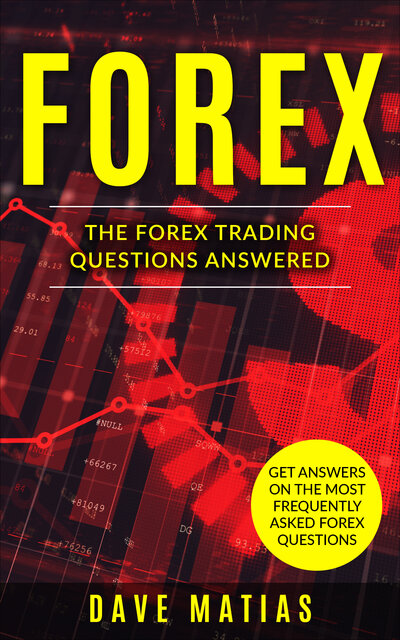There are two main approaches to forex trading: discretionary trading vs systematic trading. Discretionary trading involves making trading decisions based on the trader’s speculative intuition and experience, while non-discretionary trading involves using predetermined rules and algorithms to make trading decisions.
Understanding the differences between discretionary and nondiscretionary forex trading is crucial for traders, as it can help them determine which approach is best suited for their trading styles and goals.
Additionally, understanding the pros and cons of discretionary trading vs systematic trading can help speculators to make informed decisions and manage their risks more effectively.
Definition and explanation of discretionary trading
Discretionary trading is a forex trading approach that involves making trading decisions based on the trader’s judgment and experience. In other words, the trader uses their discretion to decide when to enter or exit trades, rather than relying on predetermined rules or algorithms.
Pros:
Greater flexibility:
Discretionary trading allows traders to adapt to changing market conditions and adjust their strategies accordingly.
Potential for higher returns:
Discretionary traders can use their intuition and experience to identify profitable trading opportunities that may not be captured by automated trading systems.
Opportunities for creativity:
Discretionary traders have the freedom to experiment with different trading strategies and techniques, which can lead to innovative and successful approaches.
Cons:
Greater potential for emotional bias:
Discretionary traders may be more prone to emotional biases such as overconfidence or fear, which can lead to poor trading decisions.
Higher level of skill required:
Discretionary trading requires a high level of skill and experience, as traders must be able to make trading decisions quickly and effectively.
Difficulty in replicating success:
Discretionary trading success can be difficult to replicate, as it relies heavily on the individual trader’s intuition and experience.
Examples of discretionary trading strategies and techniques
Discretionary trading strategies and techniques can vary widely depending on the trader’s style and approach.
Some common examples include:
- Technical analysis: Discretionary traders may use technical analysis tools such as chart patterns, trend lines, and various indicators to identify potential trading opportunities.
- Fundamental analysis: Discretionary traders may also use fundamental analysis to evaluate economic and political factors that could impact currency exchange rates.
- Price action trading: Discretionary traders may use price action analysis to identify key levels of support and resistance, and make trading decisions based on how the price reacts to these levels.
- News trading: Discretionary traders may also monitor news releases and events that could impact the forex market, and make trading decisions based on the potential impact of these events.
Real-world examples of successful discretionary traders
There have been many successful discretionary forex traders throughout history, including:
George Soros: One of the most well-known and successful forex traders of all time, Soros used a variety of discretionary trading strategies to generate enormous profits.
Paul Tudor Jones: Another highly successful discretionary trader, Jones used a combination of technical and fundamental analysis to identify trading opportunities.
Bruce Kovner: Kovner used a variety of discretionary trading strategies to build one of the most successful trading firms in history, with annual returns of over 20%.
Challenges and risks associated with discretionary Forex trading
While this approach can offer greater flexibility and customization compared to systematic trading, it also poses significant challenges and risks.
Here are some of the key challenges and risks associated with discretionary forex trading:
- Emotional Bias: Discretionary traders can be prone to emotional bias when making trading decisions. They may be influenced by their personal beliefs, experiences, and emotions, which can lead to irrational and impulsive decisions that are not based on objective analysis or data.
- Lack of Consistency: Since discretionary traders rely on their judgment, they may not have a consistent trading approach or strategy. This can result in inconsistent performance and difficulty in assessing the effectiveness of their trading decisions.
- Limited Backtesting: Discretionary trading decisions are often based on experience and intuition rather than a systematic analysis of historical data. This makes it difficult to backtest and validate trading strategies, which can increase the risk of losses.
- Overtrading: Discretionary traders may be tempted to overtrade, especially if they feel that they need to take action to justify their directional biases or demonstrate their expertise.
- Lack of Discipline: Discretionary traders may lack discipline when it comes to following their trading plan or managing risk. They may be prone to taking larger positions or holding losing trades for too long, which can increase the risk of losses.
- Market Volatility: Forex markets are inherently volatile, and discretionary trading decisions may not always be able to keep up with market fluctuations. This can result in missed opportunities or losses.
In summary, discretionary forex trading offers greater flexibility and customization compared to systematic trading, but it also poses significant challenges and risks.
To mitigate these risks, it is essential to have a clear trading plan, follow strict risk management principles, and continually assess and refine your trading approach based on objective data and analysis.

Definition and explanation of nondiscretionary trading
Nondiscretionary Forex trading is a type of trading strategy where a trader follows a set of rules and executes trades based on predetermined criteria without any subjective interpretation or personal judgment. This trading style is also referred to as systematic or algorithmic trading because it relies on computer algorithms to make trading decisions.
In this approach, traders use pre-defined rules to enter and exit trades based on technical or fundamental indicators. They use automated trading systems to execute trades based on these rules. This eliminates the emotional aspect of trading, which can lead to impulsive decisions and mistakes.
Pros:
Eliminates emotions and biases:
Trading decisions are made based on pre-defined rules, eliminating the impact of emotions and biases that can influence discretionary trading.
Consistency:
Nondiscretionary trading allows for consistent execution of trades since the same set of rules is applied consistently to all trades.
Backtesting:
Automated systems allow for backtesting of trading strategies using historical data, which helps traders optimize their strategies and identify any weaknesses.
Faster execution:
Automated trading systems can execute trades faster than manual trading, which can be advantageous in volatile markets.
Cons:
Lack of flexibility:
Nondiscretionary trading is based on pre-defined rules, and traders may not be able to adjust their strategies in response to changing market conditions or news events.
Technical knowledge required:
Nondiscretionary trading requires technical knowledge of programming and algorithms, which may be a barrier to entry for some traders.
Dependence on technology:
Nondiscretionary trading relies on computer algorithms and automated systems, which can be prone to technical glitches and failures.
Examples of a few simple, non-discretionary trading strategies and techniques:
Moving Average Crossover
This strategy involves using two moving averages (one short-term and one long-term) to identify trend changes. When the short-term moving average crosses above the long-term moving average, a buy signal is generated, and when the short-term moving average crosses below the long-term moving average, a sell signal is generated.
Bollinger Bands
Bollinger Bands are a technical indicator that uses a moving average and a standard deviation to create an upper and lower band. Traders can use these bands to identify overbought and oversold conditions in the market and enter trades accordingly.
Breakout Trading
This strategy involves identifying key levels of support and resistance and entering trades when the price breaks out of these levels. Traders can use technical indicators like the Relative Strength Index (RSI) to confirm the strength of the breakout.
Real-world examples of successful nondiscretionary traders
One example of a successful nondiscretionary trader is James Simons, the founder of Renaissance Technologies, a quantitative hedge fund that uses mathematical models and algorithms to generate trading signals. The fund has consistently outperformed the market and has become one of the most successful hedge funds in history.
Another example is David Shaw, the founder of D. E. Shaw & Co, a hedge fund that uses quantitative strategies and computer models to generate trading signals. The fund has a long track record of consistent returns and has become one of the largest hedge funds in the world.
Challenges and risks associated with nondiscretionary trading
One of the main challenges of nondiscretionary trading is the potential for technical failures or glitches in automated trading systems. These failures can lead to significant losses if trades are not executed correctly.
Another risk is the lack of flexibility in trading strategies. Nondiscretionary traders may miss out on opportunities to capitalize on market events or changes if their strategies are too rigid and cannot be adjusted quickly.
Additionally, market conditions can change rapidly, and the past performance of a strategy may not guarantee future success. A strategy that has worked well in the past may not work in a different market environment, leading to losses.
Moreover, nondiscretionary trading requires technical knowledge and expertise in programming and algorithms. Traders without this knowledge may find it difficult to implement and optimize their strategies, which can limit their success.
Lastly, there is a risk of over-optimization, which is when traders tweak their strategies to fit past data too closely, leading to poor performance in the future when market conditions change.
In conclusion, while non-discretionary trading has its benefits, including the elimination of emotions and consistent execution, it also has its challenges and risks, such as technical failures, lack of flexibility, and the risk of over-optimization.
Traders considering this approach should weigh the pros and cons carefully and ensure they have the technical expertise and resources needed to implement and optimize their strategies effectively.
Comparison of the advantages and disadvantages of both approaches
As discussed before, discretionary trading is a trading strategy that relies heavily on a trader’s speculative intuition, experience, and judgment. In contrast, nondiscretionary trading is a more systematic approach that involves using algorithms or rules to execute trades.
Here are some advantages and disadvantages of both approaches:
Advantages of discretionary trading
- Flexibility: Discretionary traders have the freedom to adjust their trading strategies based on changing market conditions. They can use their experience and intuition to identify opportunities that may not be apparent using a rigid, rules-based approach.
- Adaptability: Discretionary traders can adapt to new information quickly and make adjustments to their strategies as needed. They can also take advantage of unexpected opportunities that may not fit within a predetermined trading plan.
- Human touch: Discretionary traders can use their judgment and experience to factor in variables that may not be included in a rules-based trading system. They can also consider market sentiment and other intangible factors that may impact market movements.
Disadvantages of discretionary trading
- Emotional bias: Discretionary traders may be prone to emotional biases, such as overconfidence, fear, or greed. These biases can lead to poor trading decisions and losses.
- Lack of consistency: Discretionary trading can lack consistency since it relies on a trader’s intuition and judgment, which can vary from person to person. This inconsistency can make it difficult to track performance and optimize trading strategies.
- Time-consuming: Discretionary trading requires a significant amount of time and effort to stay up-to-date on market trends and news, monitor trading positions, and make informed decisions.
Advantages of nondiscretionary trading
- Objectivity: Nondiscretionary trading is based on algorithms or rules, which means that trades are executed based on specific criteria rather than subjective acumen. This can reduce the impact of emotional biases on trading decisions.
- Consistency: Nondiscretionary trading is highly consistent since it follows a set of rules or algorithms. This consistency can make it easier to track performance and optimize trading strategies.
- Backtesting: Nondiscretionary trading strategies can be tested on large periods to evaluate their performance using historical data. This can help traders refine their strategies and identify areas for improvement.
Disadvantages of nondiscretionary trading
- Limited flexibility: Nondiscretionary trading strategies may be less flexible than discretionary strategies since they are based on predetermined rules or algorithms. This can make it difficult to adapt to changing market conditions or unexpected events.
- Lack of human touch: Nondiscretionary trading strategies may not take into account market sentiment or other intangible factors that can impact market movements.
- Over-optimization: Nondiscretionary trading strategies can be over-optimized, meaning that they may perform well in backtesting but poorly in real-world trading due to unforeseen market conditions or changes in market dynamics.
Discretionary trading may be better suited for traders who:
Have experience and intuition
Discretionary traders rely on their experience and intuition to make trading decisions, so they need to have a good understanding of market dynamics and be able to interpret market data and news.
Enjoy flexibility
Discretionary traders enjoy the flexibility to adjust their strategies based on changing market conditions, so they need to be comfortable making decisions on the fly.
Can control emotions
Discretionary trading can be emotionally challenging, so traders who can control their emotions and avoid emotional biases may be more successful.
Nondiscretionary trading may be better suited for traders who:
Prefer objectivity
Nondiscretionary traders prefer objective criteria for making trading decisions, which can help to eliminate emotional biases and increase consistency.
Have a technical focus
Nondiscretionary traders may have a focus, on using technical analysis and algorithms to identify trading opportunities and execute trades.
Are comfortable with automation
Nondiscretionary trading relies on automation and algorithms, so traders who are comfortable with technology and programming may find this approach more appealing.
Now, trading styles and personalities are not black and white, and many traders may use a combination of discretionary and nondiscretionary trading approaches, which happens a lot in the real world of trading.

Discussion of how traders can combine discretionary and nondiscretionary elements in their trading strategies
Traders can combine discretionary and nondiscretionary elements in their trading strategies to create a hybrid approach that leverages the advantages of both approaches.
One way to combine discretionary and nondiscretionary elements is to use a rules-based trading system as a foundation and then apply discretionary judgment to adjust the system based on changing market conditions.
For example, a trader might use a technical analysis-based algorithm to identify potential trades, but then apply their discretion to fine-tune the system based on market news or events.
Another way to combine discretionary and nondiscretionary elements is to use a discretionary approach to identify potential trades and then use a rules-based system to execute trades.
For example, a trader might use their intuition and experience to identify potential trading opportunities, but then use a program or algorithm to execute trades based on pre-defined rules.
Regardless of the approach, it’s important for traders to understand the strengths and weaknesses of both discretionary and non-discretionary trading and to develop a strategy that aligns with their personality, risk tolerance, and trading goals. This may involve experimenting with different approaches and refining strategies over time based on real-world trading experience.
Factors to consider when choosing a trading approach
There are several factors that traders should consider when choosing a trading approach, including:
Market conditions
Different trading approaches may be more or less effective depending on the current market conditions. For example, a discretionary approach may be more effective in volatile markets to capture “volatility trades”, while a rules-based approach may be more effective in trending conditions.
Personal preferences
Traders should consider their personal preferences, including their risk tolerance, time horizon, and trading style. For example, traders who prefer a more objective style of trading may prefer a rules-based approach, while traders who enjoy analyzing market data and making their own speculative decisions may prefer a discretionary approach.
Available resources
Traders should also consider the resources they have available, including access to market data, technology, and trading platforms. Some trading approaches may require more resources than others. For example, day-trading the forex markets requires advanced technical tools such as; footprint charts, market delta, custom volume or tick indicators, etc.
Trading goals
Traders should consider their trading goals, including their desired level of profitability and risk management. Different trading approaches may be better suited to achieving different trading goals. For example, some traders can be happy with 5% monthly goals, others with 20%. Some traders are comfortable holding open trades overnight, even over the weekends, others don’t.
Understanding personal preferences and trading goals
Understanding personal preferences and trading goals is crucial when choosing a trading approach. Forex traders should consider their preferred level of risk, time horizon, and trading style.
For example, a trader who prefers a longer time horizon and a more conservative risk approach may prefer a nondiscretionary approach, while a trader who enjoys short-term trades (scalping, day trading) and is willing to take on more risk may prefer a discretionary approach.
Traders should also consider their trading objectives, including their desired level of profitability. Some trading approaches may be better suited to achieving certain goals.
For example, a rules-based approach may be better suited to achieving consistent profits over the long term, while a discretionary approach may be better suited to taking advantage of short-term market opportunities.
Identifying the most suitable approach based on individual strengths and weaknesses
Traders should also identify their strengths and weaknesses when choosing a trading approach.
For example, traders who are more analytical and enjoy working with data may be better suited to a rules-based approach, while traders who are more intuitive and enjoy making their own decisions may be better suited to a discretionary approach.
Traders should also consider their weaknesses and work to address them. For example, a trader who struggles with emotional decision-making may need to adopt a more rules-based approach to reduce the impact of emotions on their trades.
Traders should carefully evaluate these factors and experiment with different approaches to find the one that works best for them. It’s also important to be flexible and adapt to changing market conditions and personal circumstances over time.
Conclusion
In this article, we explored the differences between discretionary and nondiscretionary trading approaches. Discretionary trading relies on the trader’s judgment and intuition to make trading decisions, while non-discretionary trading relies on rules-based systems and automation.
We discussed the advantages and disadvantages of each approach and how traders can combine elements of both approaches to create a hybrid trading strategy.
We also discussed the importance of considering personal preferences, trading goals, market conditions, and resources when choosing a trading approach. Traders should evaluate their strengths and weaknesses and experiment with different approaches to find the one that works best for them.
Choosing the right trading approach is crucial for achieving success in the markets. Traders who choose an approach that aligns with their personality, trading goals, and strengths are more likely to achieve consistent profits and manage risk effectively.
Finally, we encourage traders to experiment with different trading approaches and strategies to find the best fit. Remember, there is no one-size-fits-all approach to trading, and what works for one trader may not work for another.
By trying out different approaches and refining strategies based on real-world trading experience, speculators can increase their chances of success and find a trading approach that is sustainable over the long term.






